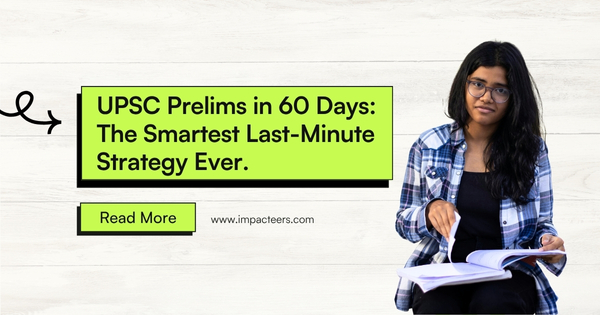Why Career Path Confusion is More Common Than Ever in 2025
Feeling lost in your career path? You’re not alone if it feels more like a maze than a straight road. In 2025, career confusion isn’t a sign of failure — it’s a natural consequence of a work world that’s shifting faster than ever. With AI rewriting job descriptions, industries collapsing and expanding, and remote work redefining workplace norms, the very idea of a “stable job” has evolved
Students fresh out of university are rethinking their degrees. Mid-career professionals are questioning their 9-to-5 routines. Even seasoned experts are reassessing their career GPS to align with new values and technologies. If you’re stuck at a fork in your professional road, this guide will help you realign, reset, and reignite your path.
Step 1: Reflect Deeply on What Drives You

The journey to a fulfilling career starts with an inward detour. Instead of jumping into job listings or skill-building courses, pause. Ask: What motivates you beyond the paycheck? What kind of problems do you enjoy solving? When do you feel most alive at work?
In 2025, self-awareness is your strongest career compass. Tools like journaling apps (e.g., Journey, Day One) and self-assessment quizzes like the VIA Strengths Survey or Ikigai-based worksheets are more relevant than ever.
Explore your non-negotiables: Do you crave freedom, stability, impact, or creativity? Recognizing these anchors helps filter out roles that look good on paper but feel empty in real life.
Step 2: Inventory Your Current Skills and Interests
This isn’t just about listing degrees or work experience. Your skills and passions extend beyond your résumé. Maybe your obsession with personal finance could lead to fintech. Maybe your weekend gaming hobby translates to UX design or digital storytelling.
In 2025, digital tools make this reflection sharper. LinkedIn’s AI-driven skill assessments, Coursera’s personalized skill paths, and Skillshare’s creative learning maps allow you to map your talents and see how they match today’s job landscape.
Make two lists:
- Skills you already have
- Activities that energize you
Look for overlap,that’s your career sweet spot. That’s where the magic (and money) is.
Step 3: Research Career Options with Real-Time Labor Market Data
Guesswork has no place in your career journey. Today’s career GPS includes labor market data in real time. Platforms like Impacteers and LinkedIn’s Career Explorer offer up-to-date info on which roles are rising, stagnating, or disappearing.
Search by city, industry, skillset, or remote flexibility. Use Impacteer’s mobile application to get a peek at company cultures and future-proof roles. Government portals now include predictive AI modeling for job trends. Take advantage.
And remember: many of the hottest roles in 2025,AI Prompt Engineer, Digital Wellness Coach, Climate Tech Analyst,didn’t exist a few years ago. So if your dream job isn’t listed, maybe you’re meant to invent it.
Step 4: Talk to People Doing the Work You’re Curious About
You’d be amazed how much clarity a single conversation can bring. Talking to someone who’s already walking the path you’re considering can demystify the day-to-day realities,and help you dodge costly mistakes.
Don’t just rely on Google. Message someone on LinkedIn, join Slack communities, or use platforms like Lunchclub and Polywork to set up virtual chats. Informational interviews are not job requests,they’re learning opportunities.
Ask smart questions: What surprised you most about this job? What skills matter most in your field? What would you do differently if you could start over? Let their answers
Step 5: Test and Experiment Before Committing
You wouldn’t buy a house without seeing it first,why commit to a career path without test-driving it? In 2025, there are more ways than ever to get a taste of a role before making it your full-time focus.
Try freelance gigs on platforms like Contra, Upwork, or Fiverr. Participate in virtual internships through Forage. Volunteer for nonprofit tech or design projects. Test the waters with short-term experiences that stretch your skills and clarify your direction.
These experiments can offer more insight than any personality quiz,and they make great portfolio content, too.
Step 6: Upskill Strategically
Learning is no longer optional. If you want to thrive, not just survive, you’ll need to continuously upgrade your skills. But here’s the trick: don’t chase trends,align upskilling with your interests and market needs.
Hot skills in 2025 include AI literacy, data storytelling, digital collaboration, climate tech, and emotional intelligence. Platforms like Impacteers, EdX, Reforge, and Google Career Certificates make these accessible and affordable.
Schedule “learning sprints” around your job,15 minutes a day is enough. Focus on micro-credentials or bootcamps that offer immediate ROI.
Step 7: Create a Career Roadmap and Track Progress

Now that you’ve done the deep work, it’s time to build your career GPS. A roadmap gives you clarity, direction, and momentum.
Start with one-year and three-year milestones. What roles do you want to target? What skills will you need? What relationships should you nurture? Use tools like Notion, Trello, or specialized apps like TealHQ to track your journey.
Don’t go it alone. A mentor or career coach can offer accountability and outside perspective. Remember, progress > perfection.
The Emotional Side of Career path Confusion
Changing careers or even just reevaluating your path can stir up anxiety, doubt, and fear. That’s normal. But don’t let those feelings make the decisions for you.
It helps to reframe confusion as curiosity. Ask, “What’s possible for me?” instead of “What’s wrong with me?” Mindset shifts,from fear to experimentation, from rigidity to exploration,can unlock tremendous growth.
When to Pivot vs. Persevere
There’s a difference between being bored and being burned out. Sometimes, we need to push through resistance. Other times, it’s a sign we’ve outgrown a role. If you’re constantly drained, disconnected from your work, or dreading Mondays, it might be time to pivot. On the other hand, if you still see room to grow and challenges to tackle, consider staying and learning.
Check in with your values and long-term vision. A strategic pivot is not quitting,it’s evolving.
The Role of Personal Branding in Career path Growth

Your online presence is no longer optional,it’s your digital reputation. Recruiters, clients, collaborators,they all Google you.
Make sure your LinkedIn is active and reflective of who you are. If you’re in tech, design, or writing, platforms like GitHub, Behance, and Medium can showcase your voice and work.
Post with purpose, not pressure. Consistency over virality wins in the long run.
The Rise of Non-Linear Career Path
Gone are the days of linear ladder climbing. Today’s professionals zigzag across roles, industries, and even continents. And that’s okay.
Patchwork careers are the new normal: a UX designer who freelances, teaches online, and consults. A data analyst who runs a newsletter and speaks at climate conferences.
These paths aren’t scattered,they’re diversified. Build your career like a portfolio: aligned, resilient, and adaptable.
Building Resilience for the Long Haul
A career is not one decision,it’s hundreds. And not all will work out. What matters most is how you respond when plans fail, roles dissolve, or growth plateaus.
Resilience is a skill you can build. Practice self-compassion. Normalize failure as feedback. Celebrate progress, not just outcomes.
A growth mindset isn’t a cliché,it’s a career advantage.
The Role of AI Tools in Career Path Planning
AI isn’t taking your job,it’s shaping it. Use it to your advantage. Career platforms now offer resume analyzers, skill-match bots, interview simulators, and real-time role mapping.
Tools like Teal, Kickresume, and even ChatGPT (when used smartly) can help clarify, prepare, and fast-track your career planning.
But don’t over-rely. Tech should guide,not decide. Your human judgment, creativity, and curiosity are irreplaceable.
Conclusion: You’re Not Lost,You’re Learning
Career confusion isn’t a dead-end,it’s a signal. A sign that you’re self-aware enough to want better. A sign that you’re growing.
Every pivot, pause, and recalibration teaches you something. Stay curious. Stay courageous. Keep building a career that fits who you are,and who you’re becoming.
FAQs
1. How do I know if I’m on the right career path?
If your work energizes you, aligns with your values, and offers room to grow,you’re likely on the right track. Regular self-reflection and feedback from mentors can help confirm this.
2. What if I have too many interests and can’t pick one?
That’s not a flaw,it’s a gift. Look for hybrid roles or portfolio careers that let you combine skills. You don’t have to choose just one path.
3. Is it too late to change careers after 30 or 40?
Absolutely not. Many successful professionals reinvent themselves mid-career. With the right strategy and support, age becomes an advantage.
4. How can I upskill if I’m working full time?
Micro-learning is your best friend. Use evenings or weekends for short, targeted courses. Even 15–30 minutes a day adds up over time.
5. Are non-traditional jobs (like freelancing or content creation) sustainable?
Yes, when approached like a business. Success depends on consistent branding, community building, and smart financial planning.
Learn More >> https://blog.impacteers.com
About Us >> https://www.impacteers.com



Post Comment